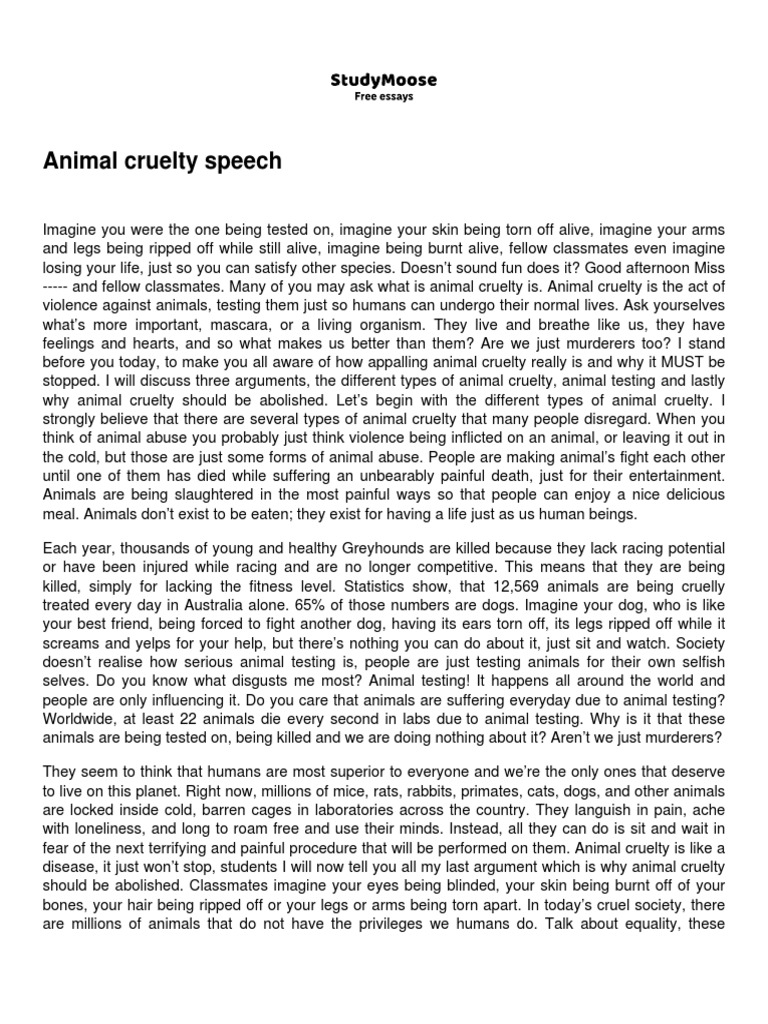When advocating against animal cruelty, a well-crafted speech serves as a powerful tool for persuasion. The objective is not just to inform the audience about the horrors animals face, but to evoke emotions that compel them to take action. Crafting a speech that resonates requires an understanding of emotional and persuasive techniques. By effectively using these techniques, a speaker can promise a shift in perspective and pique curiosity, prompting the audience to reflect deeply on their views and inspire them to act.
In the initial stage of speechwriting, a clear, emphatic message must take precedence. Begin by outlining the core themes you intend to address. Develop a structure that smoothly flows from the introduction to the concluding remarks. The introduction is critical, as it sets the tone for the entire discourse. Consider opening with a poignant story about a specific animal that has suffered due to cruelty. For example, recounting the narrative of a dog saved from a dire situation can immediately elicit sympathy. Such a vivid image can captivate the listeners, making them eager to learn more about the plight of animals.
To further engage the audience, incorporating statistics can provide an undeniable foundation to your stance. Numbers often convey weighty truths; for example, one might mention that millions of animals are abandoned each year due to negligence. Such statistics serve to anchor emotional appeals in reality, making the issues discussed not just personal but universal. However, care must be taken to present these statistics humanely, ensuring that they do not overshadow the emotional story being told. This delicate balance helps maintain the speech’s compassion while also imparting critical information.
Transitioning from statistics to emotional appeals is crucial. Share firsthand accounts or testimonials from individuals who have dedicated their lives to combating animal cruelty. These narratives can transform abstract issues into relatable experiences, allowing listeners to empathize with the cause. The stories of activists or caretakers who have witnessed the horrors of cruelty first-hand invite the audience to feel anger and sorrow while establishing a connection to the narrative. Utilize vivid, descriptive language to ignite the listener’s imagination. Phrases like “the pleading eyes of a starving animal” can evoke visceral reactions, making the audience feel as if they are witnessing these injustices themselves.
Mixing factual information with emotional appeal creates a multifaceted perspective. The speech should also include various forms of cruelty, including neglect, abuse, and exploitation in industries such as cosmetics or fashion. This comprehensive approach allows the audience to come to grips with the extensive nature of animal suffering. By revealing the myriad manifestations of cruelty, the speaker can generate a collective sense of urgency among listeners, prompting them to question their own behaviors and beliefs regarding animals.
As the speech progresses, introducing solutions becomes imperative. After illuminating the darkness of animal cruelty, guide the audience towards the light of potential action. Outline specific initiatives they can engage with, such as supporting local shelters, advocating for stricter animal welfare laws, or participating in awareness campaigns. Encourage them to become stewards of change within their communities. Engaging with the audience directly—asking them to envision how their lives would feel if they were part of a society that respects all living beings—can heighten their resolve to act.
Moreover, employing rhetorical questions may keep the audience engaged and mindful throughout the speech. Posing queries such as “What would you do if you saw an animal being mistreated?” invites self-reflection and personal connection. It breaks the passive nature of traditional speeches, facilitating active participation. The audience becomes an integral part of the journey, creating a communal experience aimed at awakening their innate empathy.
As the speech approaches its conclusion, it is paramount to recapitulate the major themes passionately yet succinctly. Reinforce the emotional appeal by revisiting the story shared at the beginning. This powerful device recalls the emotional high from the speech’s genesis, neatly threading the narrative to the conclusion. Remind the audience of the statistics—how pervasive animal cruelty truly is—and the actionable steps they can take. Conclude with an imposing call to action, one that is direct and impactful: “Join me in creating a world where every animal is treated with respect and dignity.”
To leave a lasting impression, consider ending with a memorable quote or a thought-provoking statement that circulates in the audience’s mind long after the speech concludes. For instance, citing an animal rights activist’s declaration can resonate deeply, infusing a sense of urgency and moral responsibility into the minds of listeners. This leaves them not merely as passive observers, but as motivated advocates ready to champion the cause of animal welfare.
In summary, crafting an effective speech against animal cruelty relies on a blend of emotional storytelling, factual evidence, and a sincere invitation to action. By employing these techniques thoughtfully, a speaker can promise a shift in perspective, invoking curiosity and compassion that drives transformation. As animal advocates, it is essential to harness the power of words to provoke emotional responses that inspire courage and collective action in the pursuit of a world free from cruelty towards animals.








